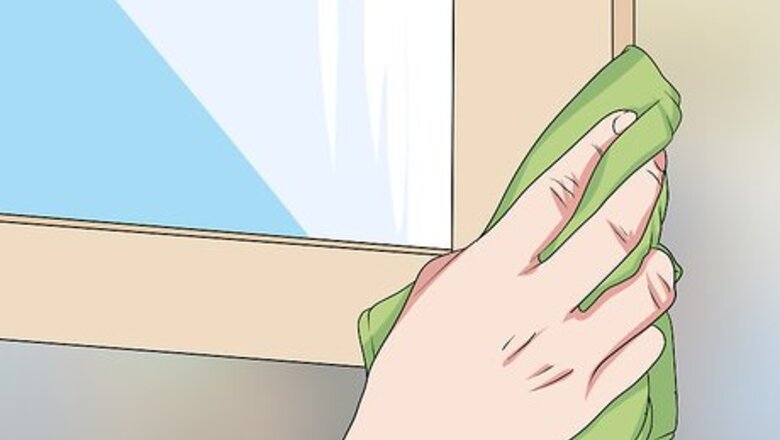
views
Cleaning the Frame and Protecting the Mirror

Clean the mirror frame to remove any dust. Wipe down the mirror frame with a clean cloth before you begin painting. Make sure to dust any crevices or embellishments on the frame. If the frame is very dusty, use a damp cloth instead to make sure that all of the dirt is removed. If you used a damp cloth to clean the frame, either let it air-dry or wipe it down with a dry cloth to remove any excess water.
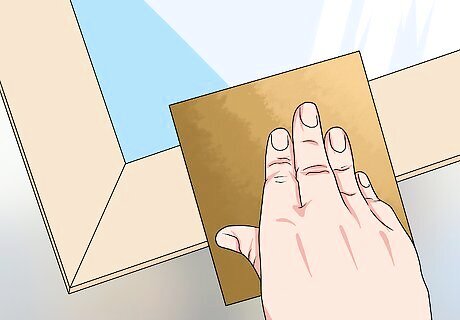
Sand the mirror frame if the old paint is chipping away. It's best to begin with a smooth, sanded surface so that the new paint can properly adhere to the frame. Use a piece of sandpaper and smooth down any bumps or uneven parts of the old paint to make the surface feel flat. It doesn't matter if you remove some of the old paint in the process, as you will be painting over this anyway. All that matters is that the surface is smooth and that the frame is clean.
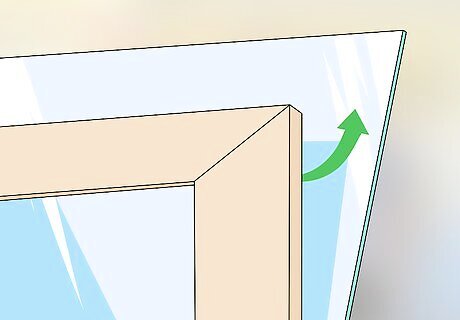
Remove the mirror from the frame if it's possible. The easiest way to paint a mirror frame is to take the mirror out before you begin painting. This ensures that the paint can't damage the mirror itself. Look for small screws on the back of the mirror and unscrew these using a screwdriver. Then lift or slide the mirror out of the frame. Only some mirrors have a removable frame. If you cannot see any screws or an obvious way to remove the frame, don't try to force it as you could end up damaging the mirror. There are ways to work around painting the frame if the mirror cannot be removed. If you really want the mirror to be removed but you cannot see how to do so yourself, take the mirror to a glass shop. It can be professionally removed and refitted once you have completed painting.
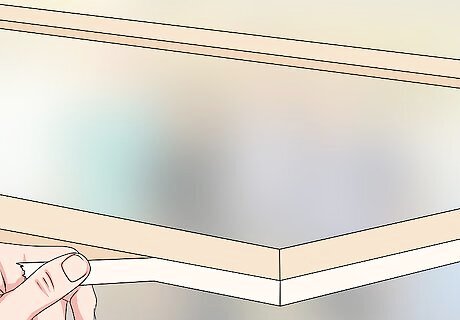
Use painter's tape and paper to protect a larger mirror. Place pieces of paper over the mirror and against the edge of the frame. If the mirror is rounded, use scissors to cut the paper to size. Then, use painter's tape to hold the paper in place and to cover the edges of the mirror, right next to the frame. Newspaper or thin cardboard is ideal to use.
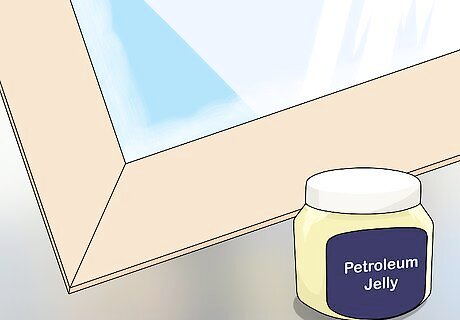
Use petroleum jelly to protect a small mirror. Petroleum jelly is ideal to use if the mirror that you are working with is small and it would be too difficult to work with painter's tape and paper in the small space. Use a cloth to spread a thick layer of petroleum jelly around the edges of the mirror and next to the frame. The petroleum jelly can easily be rubbed away once you have finished painting, which will also remove any paint that gets on it.
Applying the Paint and Removing the Protective Layers
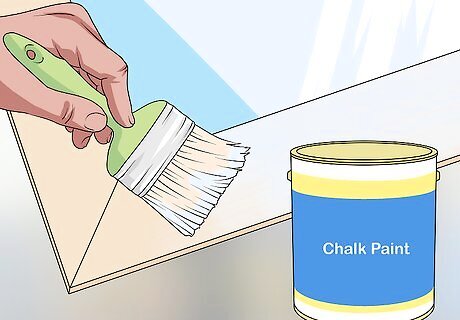
Apply chalk paint to the mirror frame for a vintage-look frame. Use a round paint brush to get the best coverage over the frame. Paint the entire mirror frame and make sure to properly cover any detailing or crevices. Take your time while using the chalk paint to ensure that the frame is fully covered. Chalk paint has a very smooth finish and will dry relatively quickly. It also has no smell and it is safe to apply in areas that aren't well-ventilated. A round brush is the best to use for chalk paint and mirror frames because it helps the paint to properly reach into all of the details.
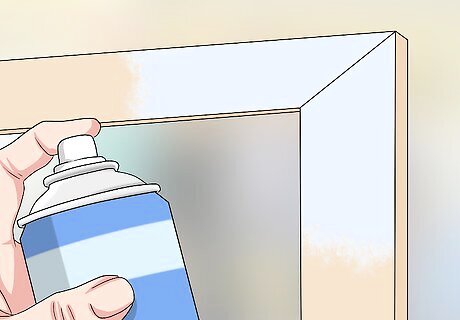
Use spray paint to cover the mirror frame very quickly. Make sure that you are in a well-ventilated area before you begin painting and that you follow all of the directions on the spray paint can. Hold the spray paint can approximately 10 in (25 cm) away from the mirror frame and press down on the trigger to begin releasing the paint. Cover the mirror frame in the paint and make sure that each part of the frame has an even coating. It can be helpful to lay newspaper or a tarpaulin down underneath the frame before you begin spray painting.
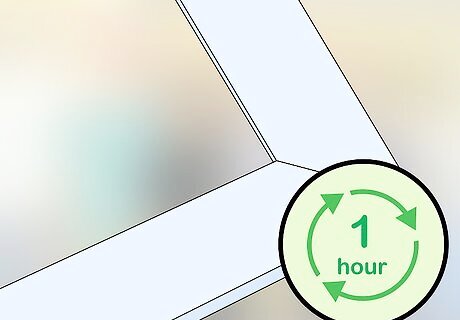
Let the mirror frame dry completely. Make sure that the mirror frame is in a well-ventilated area to help it dry quickly. A layer of chalk paint tends to take approximately 2 hours to dry fully, while a layer of spray paint will take between 10 minutes and 1 hour to dry. Always follow the recommended drying time on the label of the paint that you are using. Drying times may differ slightly than what is recommended due to the climate. For example, the paint will take longer to dry in a humid environment.
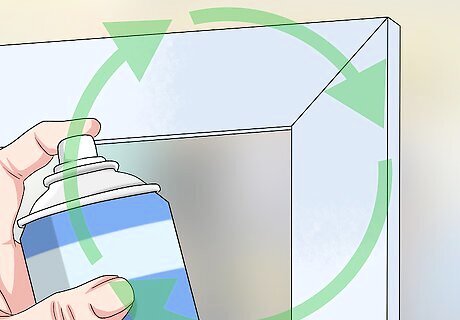
Add a second coat of paint if necessary and let it dry fully. If the first coat of paint didn't give the frame the coverage that you were aiming for or if the color isn't solid enough, apply a second coat. Let the second coat dry fully for at least the same amount of time as the first.
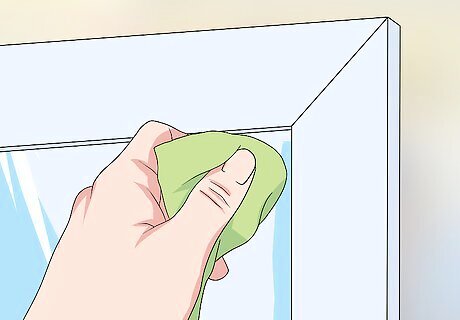
Wipe away the petroleum jelly from the mirror if you used it. Once the frame is completely dry, use a paper towel to remove the petroleum jelly from the mirror. If there is any petroleum jelly residue left on the mirror, use a clean cloth and glass cleaner to wipe this away. Any paint that is on the petroleum jelly on the mirror will simply be wiped away with the paper towel.

Remove the painter's tape and paper if necessary. If you used painter's tape and paper to protect the mirror, this can be removed once the paint is fully dry. Simply peel the painter's tape off the frame to remove the paper.
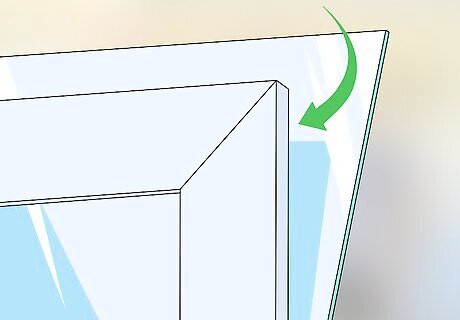
Place the mirror back into the frame if you removed it. Once the frame is dry, rest it face down on a flat surface and place the mirror back into the frame. Use a screwdriver to replace any screws that you had to remove. If a professional glass shop removed the mirror, you will have to return to get the mirror placed back into the frame.

Finished.




















Comments
0 comment